Effect of Si and HA on the Mechanical Characteristics of Spark-Plasma-Sintered Mg–Zn–Mn–(Si–HA) Composites
Abstract
1. Introduction
2. Materials and Methods
2.1. Composite Fabrication
2.2. Specimen Preparation
2.3. In Situ Micro-Pillar Compression
3. Results and Discussion
3.1. Microstructure of the Composite
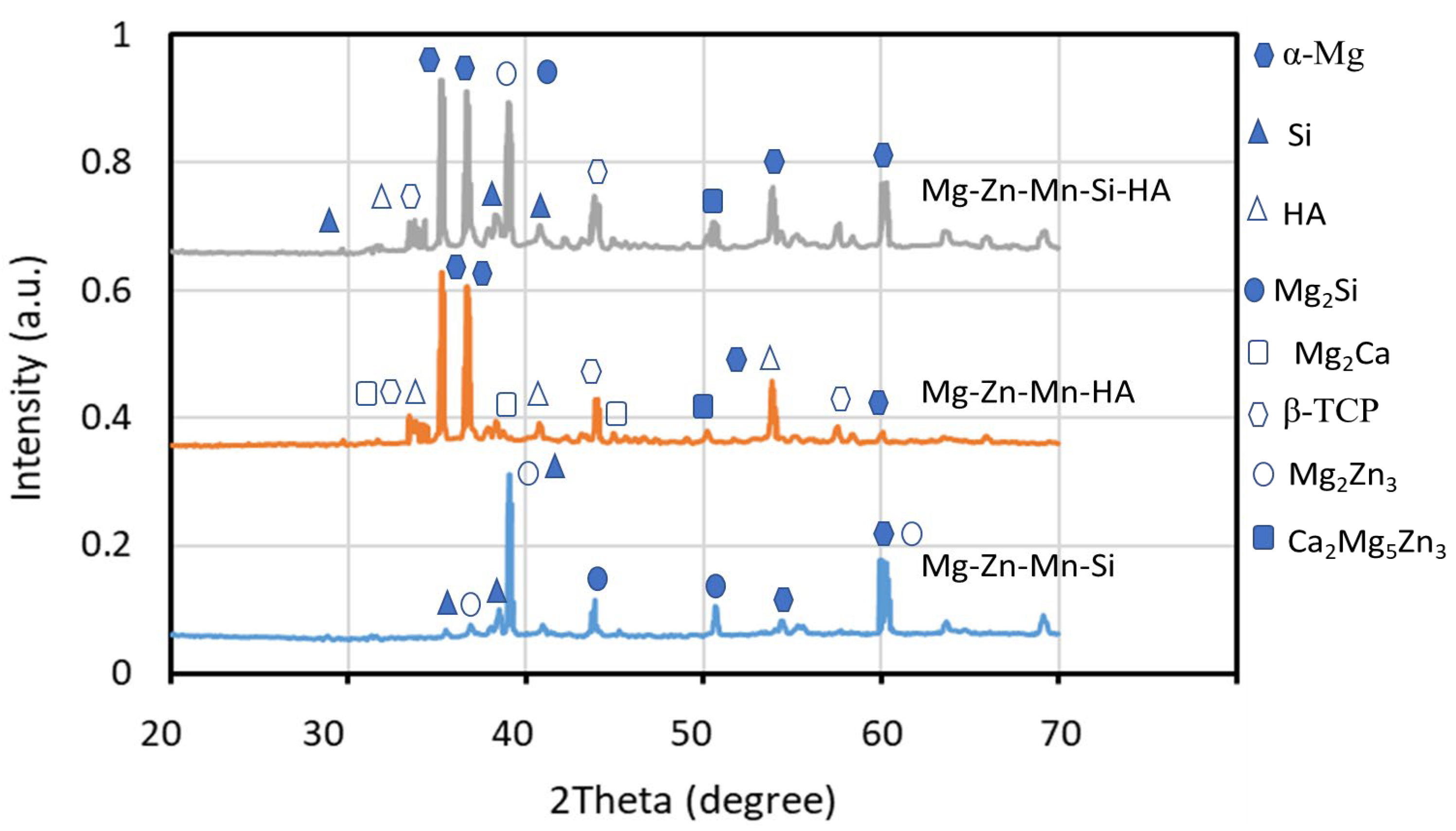
3.2. Micro-Pillar Fabrication on the Composites
3.3. Compression of Micro-Pillars
3.4. Characteristics of the Distorted Micro-Pillars After Compression
4. Conclusions
- The microstructure of the composite attained a porous network with the presence of various phases to fulfil the requirements of a biomaterial for prospective orthopedic applications.
- The yield and compressive strength of Mg–Zn–Mn–Si–HA (1543 ± 99 MPa and 1825 ± 102 MPa, respectively) are about 5.8 and 4.8 times higher, respectively, than those of Mg–Zn–Mn–HA (266 ± 42 MPa and 380 ± 10 MPa, respectively). This was attained due to the higher load-bearing capability of Si as an alloying element.
- The modulus of elasticity of Mg–Zn–Mn–Si–HA is reasonably lower (24 ± 1 MPa) to avoid stress-shielding issues in applications.
- The deformation mechanism of Mg–Zn–Mn–Si–HA is inherent in the ductile mode deformation aspect of Mg–Zn–Mn–HA and brittle mode deformation characteristics of the Mg–Zn–Mn–Si composite.
Supplementary Materials
Author Contributions
Funding
Institutional Review Board Statement
Informed Consent Statement
Data Availability Statement
Conflicts of Interest
References
- Natarajan, S. Biomimetic, Bioresponsive, and Bioactive Materials Edited by Matteo Santin and Gary J. Phillips; Taylor & Francis: Abingdon, UK, 2016. [Google Scholar]
- Nouri, A.; Wen, C. Stainless steels in orthopedics. In Structural Biomaterials; Elsevier: Amsterdam, The Netherlands, 2021; pp. 67–101. [Google Scholar]
- Alabort, E.; Tang, Y.; Barba, D.; Reed, R. Alloys-by-design: A low-modulus titanium alloy for additively manufactured biomedical implants. Acta Mater. 2022, 229, 117749. [Google Scholar] [CrossRef]
- Prakash, C.; Kansal, H.K.; Pabla, B.; Puri, S.; Aggarwal, A. Electric discharge machining—A potential choice for surface modification of metallic implants for orthopedic applications: A review. Proc. Inst. Mech. Eng. Part B J. Eng. Manuf. 2016, 230, 331–353. [Google Scholar] [CrossRef]
- Amukarimi, S.; Mozafari, M. Biodegradable magnesium-based biomaterials: An overview of challenges and opportunities. MedComm 2021, 2, 123–144. [Google Scholar] [CrossRef]
- Spoerke, E.D.; Murray, N.G.; Li, H.; Brinson, L.C.; Dunand, D.C.; Stupp, S.I. A bioactive titanium foam scaffold for bone repair. Acta Biomater. 2005, 1, 523–533. [Google Scholar] [CrossRef] [PubMed]
- Dutta, S.; Gupta, S.; Roy, M. Recent developments in magnesium metal–matrix composites for biomedical applications: A Review. ACS Biomater. Sci. Eng. 2020, 6, 4748–4773. [Google Scholar] [CrossRef]
- Song, G.; Atrens, A. Understanding Magnesium Corrosion—A Framework for Improved Alloy Performance. Adv. Eng. Mater. 2003, 5, 837–858. [Google Scholar] [CrossRef]
- Agarwal, S.; Curtin, J.; Duffy, B.; Jaiswal, S. Biodegradable magnesium alloys for orthopaedic applications: A review on corrosion, biocompatibility and surface modifications. Mater. Sci. Eng. C 2016, 68, 948–963. [Google Scholar] [CrossRef]
- Brooks, E.K.; Ehrensberger, M.T. Bio-corrosion of magnesium alloys for orthopaedic applications. J. Funct. Biomater. 2017, 8, 38. [Google Scholar] [CrossRef]
- Cho, D.H.; Lee, B.W.; Park, J.Y.; Cho, K.M.; Park, I.M. Effect of Mn addition on corrosion properties of biodegradable Mg-4Zn-0.5 Ca-xMn alloys. J. Alloys Compd. 2017, 695, 1166–1174. [Google Scholar] [CrossRef]
- Zhang, E.; Yin, D.; Xu, L.; Yang, L.; Yang, K. Microstructure, mechanical and corrosion properties and biocompatibility of Mg–Zn–Mn alloys for biomedical application. Mater. Sci. Eng. C 2009, 29, 987–993. [Google Scholar] [CrossRef]
- Radha, R.; Sreekanth, D. Insight of magnesium alloys and composites for orthopedic implant applications–a review. J. Magnes. Alloys 2017, 5, 286–312. [Google Scholar] [CrossRef]
- Huang, X.; Han, G.; Huang, W. T6 treatment and its effects on corrosion properties of an Mg–4Sn–4Zn–2Al Alloy. Materials 2018, 11, 628. [Google Scholar] [CrossRef] [PubMed]
- Gavras, S.; Buzolin, R.H.; Subroto, T.; Stark, A.; Tolnai, D. The effect of Zn content on the mechanical properties of Mg-4Nd-xZn Alloys (x = 0, 3, 5 and 8 wt.%). Materials 2018, 11, 1103. [Google Scholar] [CrossRef]
- Cheng, W.; Zhang, Y.; Ma, S.; Arthanari, S.; Cui, Z.; Wang, H.-x.; Wang, L. Tensile properties and corrosion behavior of extruded low-alloyed Mg–1Sn–1Al–1Zn alloy: The influence of microstructural characteristics. Materials 2018, 11, 1157. [Google Scholar] [CrossRef]
- Prakash, C.; Singh, S.; Gupta, M.K.; Mia, M.; Królczyk, G.; Khanna, N. Synthesis, characterization, corrosion resistance and in-vitro bioactivity behavior of biodegradable Mg–Zn–Mn–(Si–HA) composite for orthopaedic applications. Materials 2018, 11, 1602. [Google Scholar] [CrossRef]
- Li, Z.; Gu, X.; Lou, S.; Zheng, Y. The development of binary Mg–Ca alloys for use as biodegradable materials within bone. Biomaterials 2008, 29, 1329–1344. [Google Scholar] [CrossRef]
- Parande, G.; Manakari, V.; Prasadh, S.; Chauhan, D.; Rahate, S.; Wong, R.; Gupta, M. Strength retention, corrosion control and biocompatibility of Mg–Zn–Si/HA nanocomposites. J. Mech. Behav. Biomed. Mater. 2020, 103, 103584. [Google Scholar] [CrossRef]
- Predko, P.; Rajnovic, D.; Grilli, M.L.; Postolnyi, B.O.; Zemcenkovs, V.; Rijkuris, G.; Pole, E.; Lisnanskis, M. Promising methods for corrosion protection of magnesium alloys in the case of Mg-Al, Mg-Mn-Ce and Mg-Zn-Zr: A recent progress review. Metals 2021, 11, 1133. [Google Scholar] [CrossRef]
- Cho, D.H.; Avey, T.; Nam, K.H.; Dean, D.; Luo, A.A. In vitro and in vivo assessment of squeeze-cast Mg-Zn-Ca-Mn alloys for biomedical applications. Acta Biomater. 2022, 150, 442–455. [Google Scholar] [CrossRef]
- Ben-Hamu, G.; Eliezer, D.; Shin, K. The role of Si and Ca on new wrought Mg–Zn–Mn based alloy. Mater. Sci. Eng. A 2007, 447, 35–43. [Google Scholar] [CrossRef]
- Sunil, B.R.; Ganapathy, C.; Kumar, T.S.; Chakkingal, U. Processing and mechanical behavior of lamellar structured degradable magnesium–hydroxyapatite implants. J. Mech. Behav. Biomed. Mater. 2014, 40, 178–189. [Google Scholar] [CrossRef]
- Prakash, C.; Singh, S.; Pabla, B.; Sidhu, S.S.; Uddin, M. Bio-inspired low elastic biodegradable Mg-Zn-Mn-Si-HA alloy fabricated by spark plasma sintering. Mater. Manuf. Process. 2019, 34, 357–368. [Google Scholar] [CrossRef]
- Basak, A.K.; Celis, J.-P.; Vardavoulias, M.; Matteazzi, P. Effect of nanostructuring and Al alloying on friction and wear behaviour of thermal sprayed WC–Co coatings. Surf. Coat. Technol. 2012, 206, 3508–3516. [Google Scholar] [CrossRef]
- Basak, A.; Matteazzi, P.; Vardavoulias, M.; Celis, J.-P. Corrosion–wear behaviour of thermal sprayed nanostructured FeCu/WC–Co coatings. Wear 2006, 261, 1042–1050. [Google Scholar] [CrossRef]
- Zheng, B.; Ertorer, O.; Li, Y.; Zhou, Y.; Mathaudhu, S.N.; Tsao, C.Y.; Lavernia, E.J. High strength, nano-structured Mg–Al–Zn alloy. Mater. Sci. Eng. A 2011, 528, 2180–2191. [Google Scholar] [CrossRef]
- Fu, J.; Liu, K.; Du, W.; Wang, Z.; Li, S.; Du, X. Microstructure and mechanical properties of the as-cast Mg-Zn-Mn-Ca alloys. In Proceedings of IOP Conference Series: Materials Science and Engineering, Qingdao, China, 20–24 October 2016; IOP Publishing: Bristol, UK, 2017. [Google Scholar]
- Guo, P.; Cui, Z.; Yang, L.; Cheng, L.; Wang, W.; Xu, B. Preparation of Mg/Nano-HA Composites by Spark Plasma Sintering Method and Evaluation of Different Milling Time Effects on Their Microhardness, Corrosion Resistance, and Biocompatibility. Adv. Eng. Mater. 2017, 19, 1600294. [Google Scholar] [CrossRef]
- Sopyan, I.; Gunawan; Shah, Q.; Mel, M. Fabrication and sintering behavior of zinc-doped biphasic calcium phosphate bioceramics. Mater. Manuf. Process. 2016, 31, 713–718. [Google Scholar] [CrossRef]
- Sultana, N.; Mokhtar, M.; Hassan, M.I.; Jin, R.M.; Roozbahani, F.; Khan, T.H. Chitosan-based nanocomposite scaffolds for tissue engineering applications. Mater. Manuf. Process. 2015, 30, 273–278. [Google Scholar] [CrossRef]
- Du, H.; Liu, X.; Li, J.; Tao, P.; Jiang, J.; Sun, R.; Fan, Z. Use of spark plasma sintering for fabrication of porous titanium aluminide alloys from elemental powders. Mater. Manuf. Process. 2016, 31, 725–732. [Google Scholar] [CrossRef]
- Rudinsky, S.; Hendrickx, P.; Bishop, D.; Brochu, M. Spark plasma sintering and age hardening of an Al–Zn–Mg alloy powder blend. Mater. Sci. Eng. A 2016, 650, 129–138. [Google Scholar] [CrossRef]
- Prakash, C.; Singh, S.; Pabla, B.; Uddin, M. Synthesis, characterization, corrosion and bioactivity investigation of nano-HA coating deposited on biodegradable Mg-Zn-Mn alloy. Surf. Coat. Technol. 2018, 346, 9–18. [Google Scholar] [CrossRef]
- Singh, B.P.; Singh, R.; Mehta, J.; Prakash, C. Fabrication of biodegradable low elastic porous Mg-Zn-Mn-HA alloy by spark plasma sintering for orthopaedic applications. In Proceedings of IOP Conference Series: Materials Science and Engineering, Hyderabad, India, 3–4 July 2017; IOP Publishing: Bristol, UK, 2017. [Google Scholar]
- Kurdi, A.; Basak, A. Deformation of electrodeposited gradient Co/Sn multilayered coatings under micro-pillar compression. Eng. Fract. Mech. 2018, 204, 138–146. [Google Scholar] [CrossRef]
- Kurdi, A.; Tabbakh, T.; Alhazmi, H. Deformation of cold sprayed Ni-Sn coating under micro-pillar compression. Surf. Coat. Technol. 2020, 403, 126425. [Google Scholar] [CrossRef]
- Tabbakh, T.; Alshihri, S.; Basak, A.; Kurdi, A. Strength of a 3D printed Al 7068 alloy under micro-pillar compression. Met. Mater. Int. 2022, 28, 2706–2718. [Google Scholar] [CrossRef]
- Kurdi, A.; Basak, A. Micro-mechanical behaviour of selective laser melted Ti6Al4V under compression. Mater. Sci. Eng. A 2021, 826, 141975. [Google Scholar] [CrossRef]
- Arora, G.S.; Saxena, K.K. Critical review of Mg matrix composite for bio-implants through powder metallurgy. Mater. Today Proc. 2022, 57, 902–907. [Google Scholar] [CrossRef]
- Osuchukwu, O.A.; Salihi, A.; Abdullahi, I.; Abdulkareem, B.; Nwannenna, C.S. Synthesis techniques, characterization and mechanical properties of natural derived hydroxyapatite scaffolds for bone implants: A review. SN Appl. Sci. 2021, 3, 822. [Google Scholar] [CrossRef]
- Misra, A.; Hirth, J.; Hoagland, R. Length-scale-dependent deformation mechanisms in incoherent metallic multilayered composites. Acta Mater. 2005, 53, 4817–4824. [Google Scholar] [CrossRef]
- Basak, A.; Pramanik, A.; Prakash, C. Deformation and strengthening of SiC reinforced Al-MMCs during in-situ micro-pillar compression. Mater. Sci. Eng. A 2019, 763, 138141. [Google Scholar] [CrossRef]
- Martin, R.; Brown, P. Mechanical properties of hydroxyapatite formed at physiological temperature. J. Mater. Sci. Mater. Med. 1995, 6, 138–143. [Google Scholar] [CrossRef]
- Kurdi, A.; Degnah, A.; Tabbakh, T.; Alnaser, H.; Basak, A.K. Micro-Scale Deformation Aspects of Additively Fabricated Stainless Steel 316L under Compression. Materials 2024, 17, 439. [Google Scholar] [CrossRef] [PubMed]
- DelRio, F.W.; Cook, R.F.; Boyce, B.L. Fracture strength of micro- and nano-scale silicon components. Appl. Phys. Rev. 2015, 2, 021303. [Google Scholar] [CrossRef]
- Juri, A.Z.; Basak, A.K.; Yin, L. Failure mechanisms in in-situ SEM micropillar compressions of pre-crystallized and crystallized zirconia-containing lithium silicate glass-ceramics. Ceram. Int. 2023, 49, 27165–27175. [Google Scholar] [CrossRef]
- Jouda, N.S.; Essa, A.F. Preparation and study of the structural, physical and mechanical properties of hydroxyapatite nanocomposite. Mater. Today Proc. 2021, 47, 5999–6005. [Google Scholar] [CrossRef]
- Vahdat, A.; Ghasemi, B.; Yousefpour, M. Mechanical properties of the hydroxyapatite and magnetic nanocomposite of hydroxyapatite adsorbents. S. Afr. J. Chem. Eng. 2020, 33, 90–94. [Google Scholar] [CrossRef]
- Vandeperre, L.; Giuliani, F.; Lloyd, S.; Clegg, W. The hardness of silicon and germanium. Acta Mater. 2007, 55, 6307–6315. [Google Scholar] [CrossRef]
- Tanaka, H.; Kanayama, T. Inertness of SiC surfaces against Si atoms and clusters. Surf. Sci. 1999, 440, 252–258. [Google Scholar] [CrossRef]
- Rafferty, C.; Borucki, L.; Dutton, R. Plastic flow during thermal oxidation of silicon. Appl. Phys. Lett. 1989, 54, 1516–1518. [Google Scholar] [CrossRef]



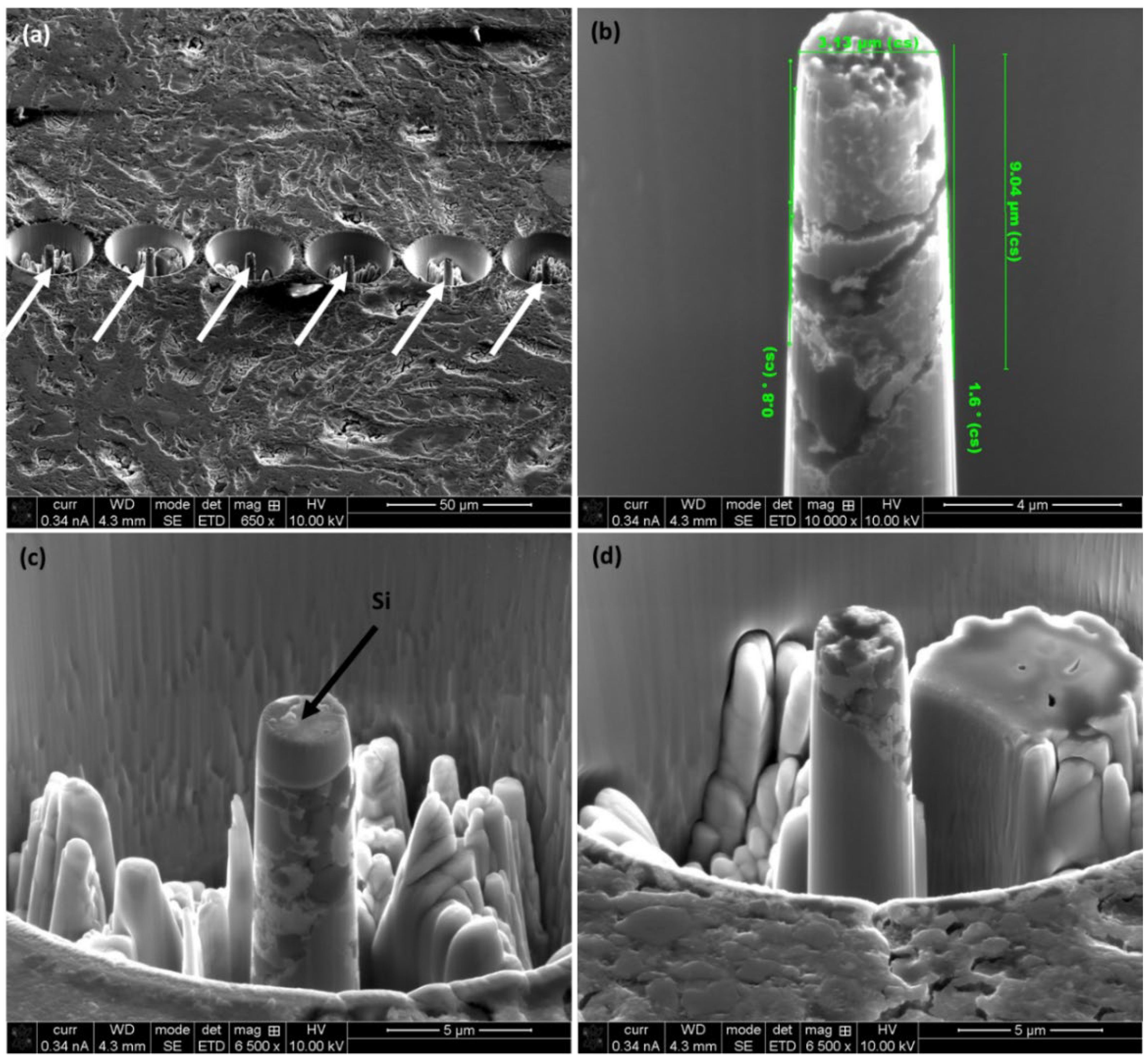
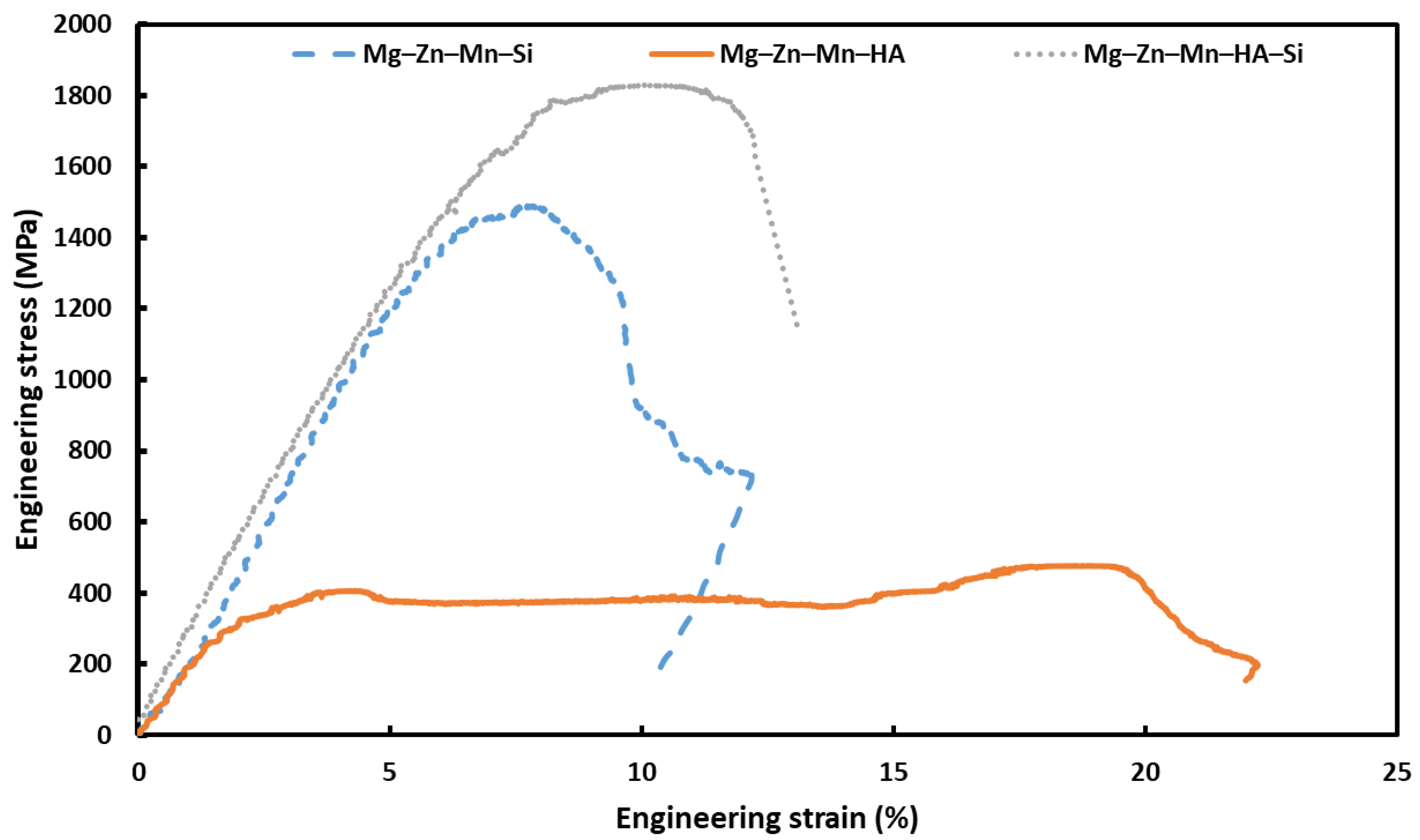
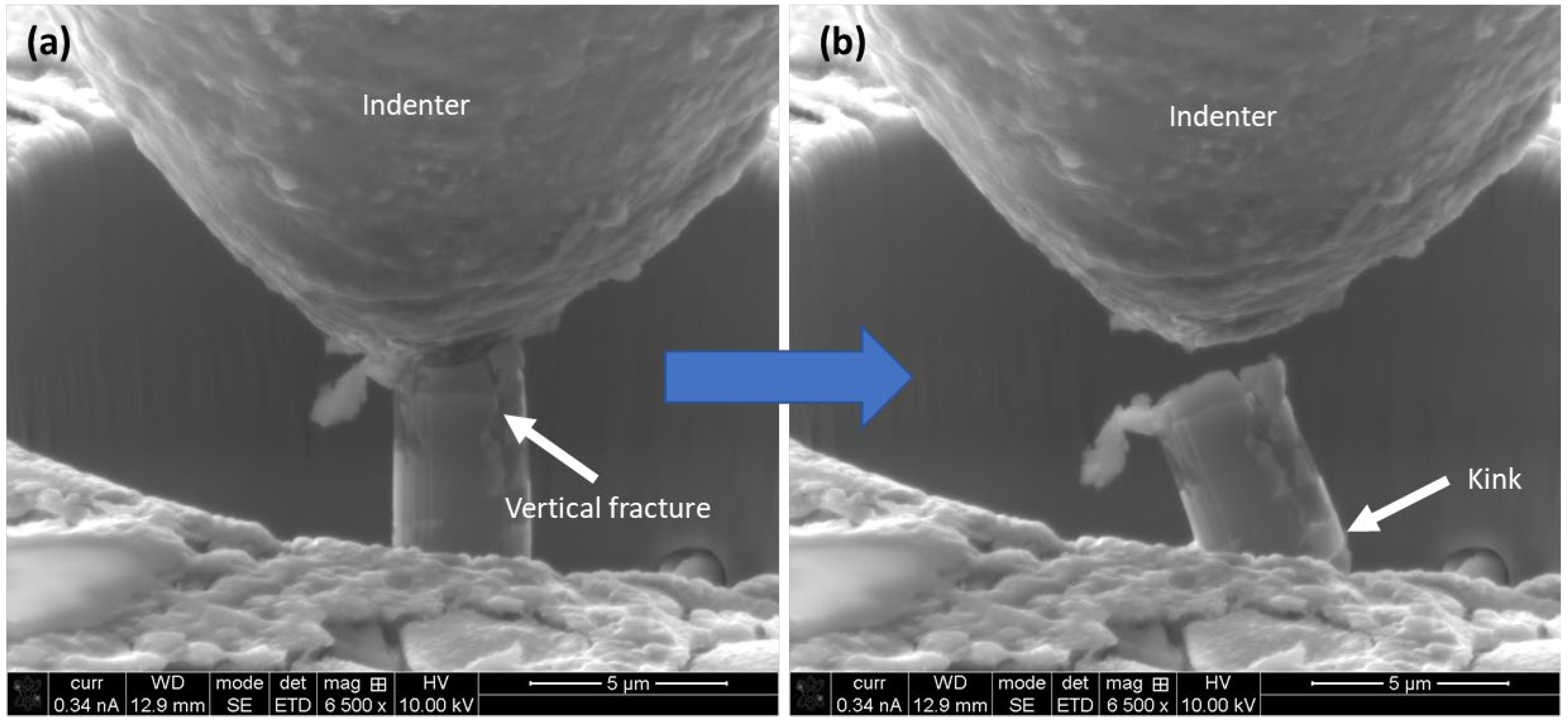
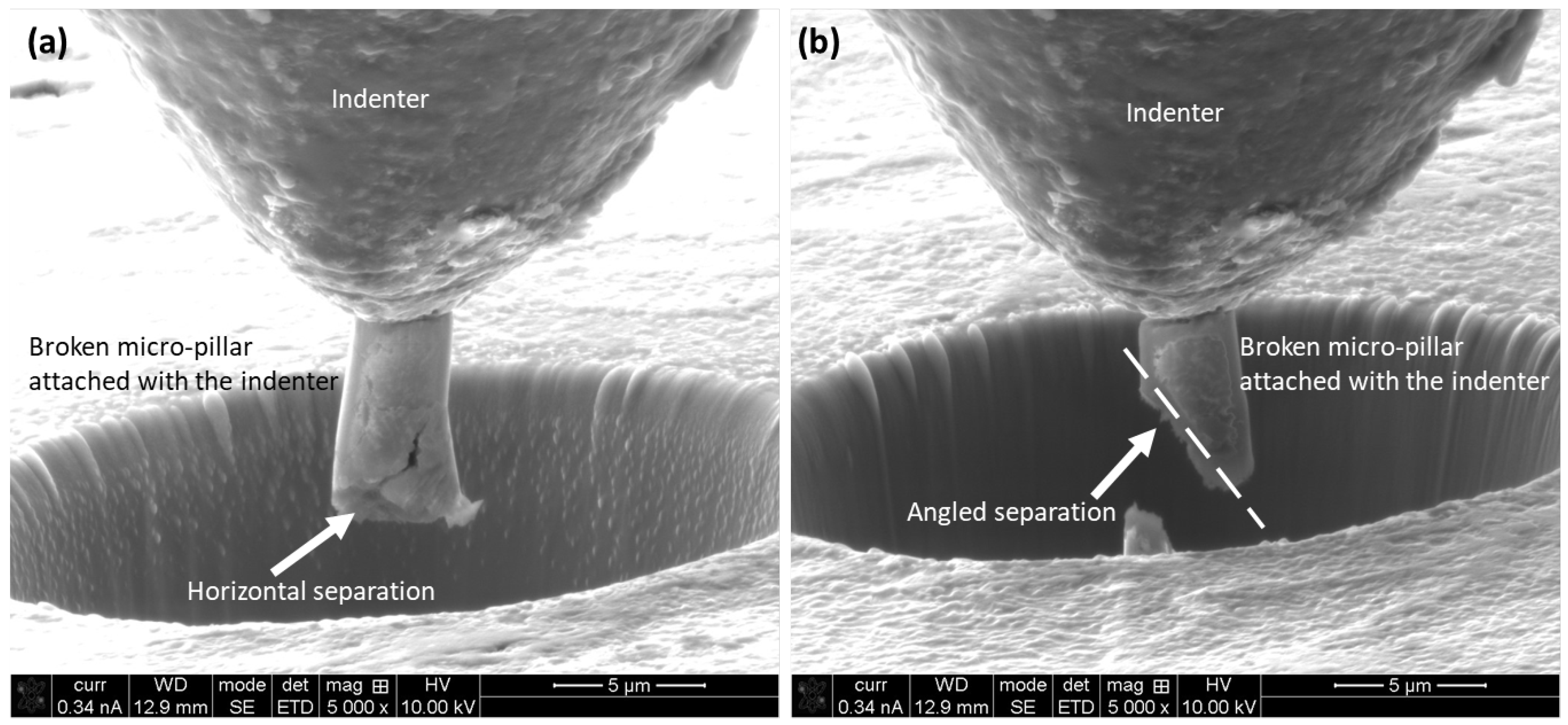

| Composite | Elemental Composition (wt. %) | |||||
|---|---|---|---|---|---|---|
| Zn | Mn | Si | HA | Mg | ||
| Sample 1 | Mg–Zn–Mn–Si | 1 | 5 | 10 | 0 | rest |
| Sample 2 | Mg–Zn–Mn–HA | 1 | 5 | 0 | 10 | rest |
| Sample 3 | Mg–Zn–Mn–HA–Si | 1 | 5 | 10 | 10 | rest |
| Mechanical Properties | Spark-Plasma-Sintered Composites | ||
|---|---|---|---|
| Mg–Zn–Mn-Si | Mg–Zn–Mn-HA | Mg–Zn–Mn-Si-HA | |
| Yields stress (MPa) | 1339 ± 103 | 266 ± 42 | 1543 ± 99 |
| Ultimate compressive stress (MPa) | 1495 ± 113 | 380 ± 10 | 1825 ± 102 |
| Young’s modulus (MPa) | 25 ± 1 | 18 ± 1 | 24 ± 1 |
Disclaimer/Publisher’s Note: The statements, opinions and data contained in all publications are solely those of the individual author(s) and contributor(s) and not of MDPI and/or the editor(s). MDPI and/or the editor(s) disclaim responsibility for any injury to people or property resulting from any ideas, methods, instructions or products referred to in the content. |
© 2025 by the authors. Licensee MDPI, Basel, Switzerland. This article is an open access article distributed under the terms and conditions of the Creative Commons Attribution (CC BY) license (https://creativecommons.org/licenses/by/4.0/).
Share and Cite
Kurdi, A.; Almalki, D.; Sarkar, S.; Aldurihem, A.; Degnah, A.; Basak, A.K. Effect of Si and HA on the Mechanical Characteristics of Spark-Plasma-Sintered Mg–Zn–Mn–(Si–HA) Composites. Coatings 2025, 15, 655. https://doi.org/10.3390/coatings15060655
Kurdi A, Almalki D, Sarkar S, Aldurihem A, Degnah A, Basak AK. Effect of Si and HA on the Mechanical Characteristics of Spark-Plasma-Sintered Mg–Zn–Mn–(Si–HA) Composites. Coatings. 2025; 15(6):655. https://doi.org/10.3390/coatings15060655
Chicago/Turabian StyleKurdi, Abdulaziz, Doaa Almalki, Sayan Sarkar, Alaa Aldurihem, Ahmed Degnah, and Animesh Kumar Basak. 2025. "Effect of Si and HA on the Mechanical Characteristics of Spark-Plasma-Sintered Mg–Zn–Mn–(Si–HA) Composites" Coatings 15, no. 6: 655. https://doi.org/10.3390/coatings15060655
APA StyleKurdi, A., Almalki, D., Sarkar, S., Aldurihem, A., Degnah, A., & Basak, A. K. (2025). Effect of Si and HA on the Mechanical Characteristics of Spark-Plasma-Sintered Mg–Zn–Mn–(Si–HA) Composites. Coatings, 15(6), 655. https://doi.org/10.3390/coatings15060655








